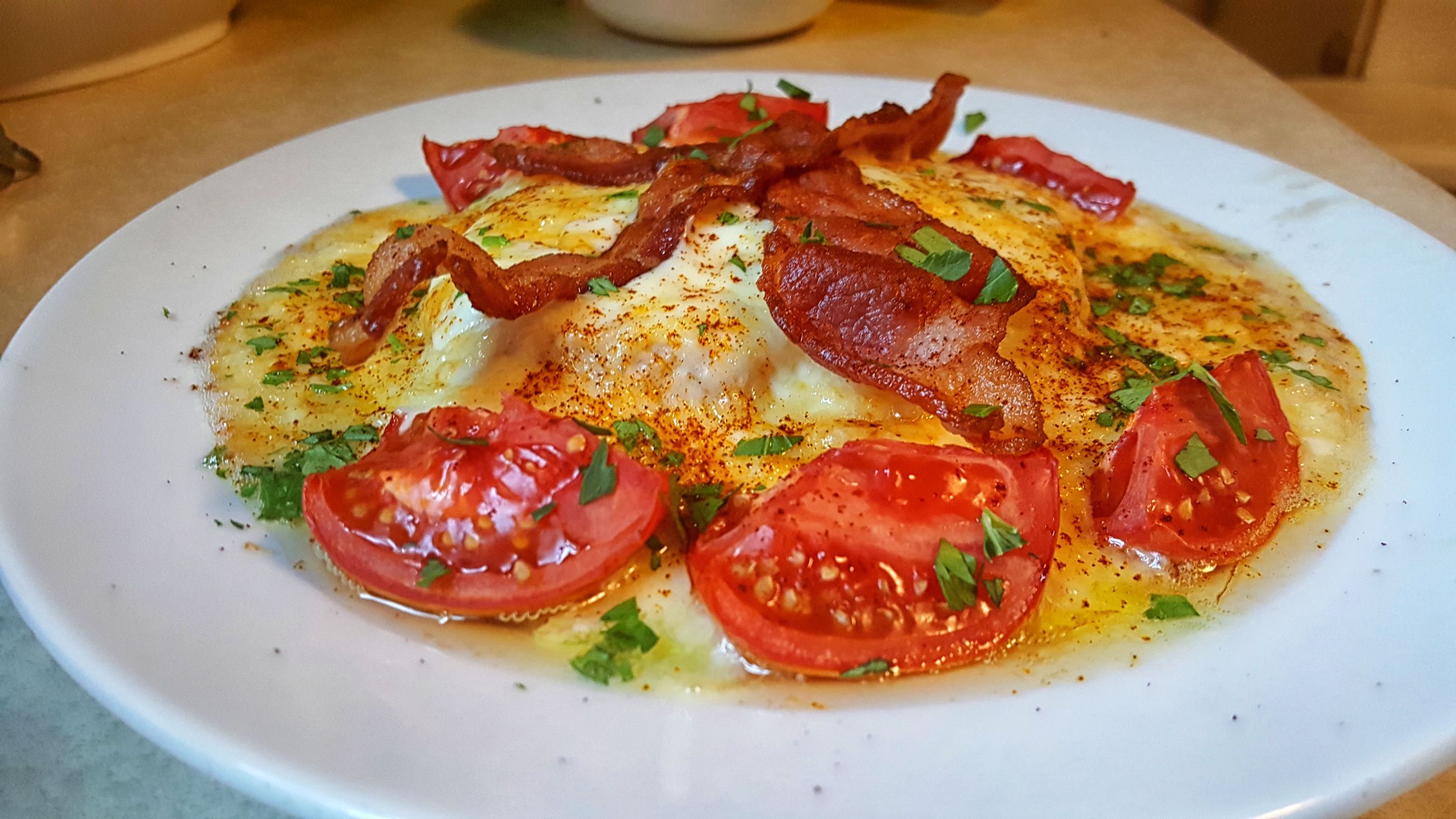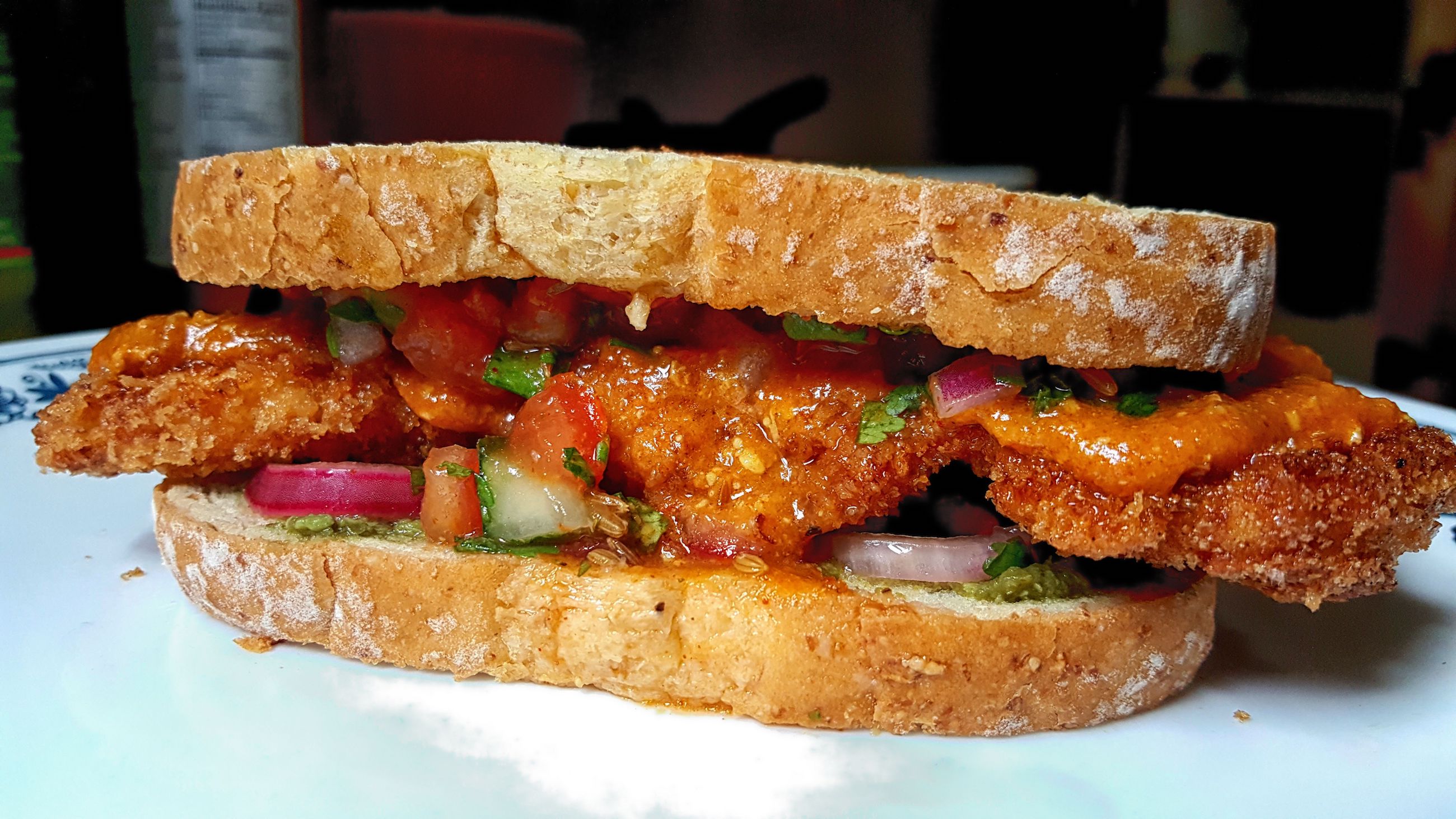Yorkshire Pudding Wrap aka the British Burrito
I don’t remember how the “British Burrito” came to my attention–was it one of the usual suspects, a Gastro Obscura or Taste Atlas writeup, a blog post, a random article on The Guardian? I don’t recall. Though I added it to our List in the fall of 2021, I believe it had been on my mind for some time before that. The very name, “British Burrito,” brings with it a flood of associations, the conventional American ideas about the heinousness of British cuisine being chief among them–understandable ideas, perhaps, given some of the dish names (spotted dick, toad in the hole) and delicacies (jellied eels, beans on toast), but inaccurate ones. Myths, in fact. There is a certain meat-and-potatoes core to British cuisine that is very much along the lines of many of the Midwestern foods I grew up eating (though they can keep their beans on toast, thank you very much).
British Burrito, though, seems to be something of a misnomer, and one that damns the dish with expectations inherited from its zestier Tex-Mex namesake. This is not a flatbread stuffed with spicy beans, meat, and cheese, with bright salsas, with crisp and pungent onions and cilantro, with rice and tomatoes and lettuce and all manner of items straight from the Chipotle steam tables. It is, in fact, very much one of those stodgy, Midwestern-friendly meat-and-potatoes affairs that should be right up my alley.
“British Burrito,” according to several of the articles I’ve read about it, is a term that seems to have originated at a specific restaurant in Halifax, West Yorkshire, England, and started appearing online around the year 2016. At around the same time, websites began publishing pieces featuring a more generic term for the dish–the Yorkshire Pudding Wrap. I have recently come to think this term is a better one, as it describes the dish more accurately without improperly appropriating the more culture-specific term “burrito.” However, re-alphabetizing it under Y would delay me writing about it for another 2 years and I’ll be damned if I was going to wait that long to try it. So let’s just agree to call it a Yorkshire pudding wrap from now on.
Yorkshire Pudding
So what is a Yorkshire pudding? It’s similar, if not exactly the same as a dish we in the US call a “popover,” essentially an eggy, unleavened batter baked at high heat in a pool of melted fat until it inflates and puffs up from steam alone. They are light and airy, soft and flexible with an ever-so-slightly crisp crust, and are commonly served as a side item with roasted meats, though they can be used in both savory and sweet applications. In fact, some types of sweet pancake–Dutch babies come to mind, or Finnish Pannu Kakku.

The oldest known mention of Yorkshire puddings comes from The Art of Cookery Made Plain and Easy, a 1747 English cookbook by Hannah Glasse. It describes a pancake-like batter poured into animal fat heated to a boil directly over the fire, cooked in the roast’s drippings, and served with the roast’s gravy.


Yorkshire pudding is an English institution, almost invariably served as part of a large meal including a roast joint or fowl. In England, the first Sunday in February has been set aside for an observance honoring the dish, and the fact that the UK’s National Yorkshire Pudding Day always falls on a Sunday (as opposed to the US National Yorkshire Pudding Day, which is on October 13th) is no accident. The meal with which the Yorkshire Pudding is most closely associated in England is the Sunday Roast.
Sunday Roast
Dinner in the more rural parts of the UK, as in the more rural parts of the US Midwest where I grew up, is a midday meal. Sunday dinner, served after church service, was traditionally a larger, more elaborate meal than the typical dinner, given the tradition of fasting before church on Sundays. The traditional Sunday dinner in England consists of a roast–beef or lamb, pork or gammon (a kind of ham), turkey or duck or goose, served with a variety of roasted or boiled vegetables, crispy roasted potatoes, gravy, and the ubiquitous Yorkshire puddings.
I made a Sunday Roast this week–sirloin tip, a lean but relatively tasty cut of beef, slathered with Worcestershire sauce and rubbed with a combination of salt, black pepper, garlic powder, onion powder, thyme, paprika, and herbs de provence, seared in a hot pan, and roasted over a bed of onion, celery, carrot, and brussels sprouts in beef stock. Mushrooms, sauteed in bacon fat. Crispy roasted Yukon Gold potatoes, seasoned with garlic, black pepper, rosemary and thyme. and small, muffin-tin sized Yorkshire puddings, which were fantastic for sopping up gravy, as advertised.
The Sunday Roast–a meal that might look very much like this one–is the inspiration for the Yorkshire pudding wrap, which takes these components–the roasted meat, the cooked vegetables, the potatoes, the gravy–and combines them in a large circular Yorkshire pudding which is then tightly wrapped around them.
Yorkshire Pudding Wrap
On the Monday after that Sunday Roast, I made this Yorkshire pudding. I used leftover batter from the night before, heated in a stainless steel pan of lard, heated in a 450° F oven for 10 minutes or so before adding the batter. The traditional wisdom is to have that fat nearly smoking hot before adding the batter. This cooked for about 15 minutes.


To it, I added a few thin slices of the roast beef, briefly reheated in beef stock, along with a few mushrooms I’d been able to set aside.
Then carrots, celery, onions, brussels sprouts.

A note on these potatoes: I used the J. Kenji Lopez-Alt recipe for British style crispy roasted potatoes from Serious Eats and I may never cook potatoes any other way again. They were crisp on the outside, creamy within, well-seasoned, and probably only marginally healthier than French Fries cooked in beef suet but I’ll take it.
Then a generous amount of gravy over everything.
I was concerned that the Yorkshire pudding would be too fragile to hold together when wrappedtightly, burrito-style, around this mass of fillings. Surprisingly, though, it was much sturdier than it appeared. I wouldn’t recommend manhandling it too hard but I was able to swaddle it quite firmly and cut the resulting wrap open for the cross-section without any issues.



The Yorkshire pudding wrap is exactly what you expect it to be. There are no surprises here. It is beef–or the meat of your choice–wrapped in an eggy pancake, with potatoes and vegetables and gravy. It is that very Sunday Dinner we’ve just eaten, presented in a different form factor.
But for all that it is quite satisfying. It might work slightly better with a chuck roast, or something cooked to more of a disintegrating pullable texture rather than this lean, thin-sliced beef roast, but that is a minor gripe. The Yorkshire pudding wrap is itself somewhat oily from having been cooked in animal fat, and this thin sheen may be part of what helps prevent it from disintegrating under the juices of the beef, the vegetables, the gravy. I’ve had burritos that didn’t keep their shape as well as this wrap.

It is not an everyday meal. I was unable to finish this wrap on my own, and had to solicit assistance. I found it worth trying though, and I can see myself making it again. I might just need to accept that I’ll have to split one of these wraps with my wife or son–or with my dog, who is only too eager to volunteer. As for the sauce I served it with–extra helpings of the gravy I’d made, derived from the roast drippings and some of the liquid cooked away from those mushrooms–it may not be a fire-roasted salsa molcajete, but it’s just the thing for a Sunday Roast in a wrap.


I like sandwiches.
I like a lot of other things too but sandwiches are pretty great





















Recent Comments